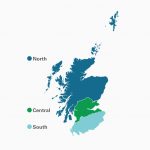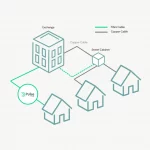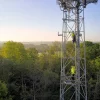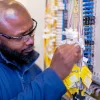New Gov Action Plan Supports Vulnerable Users in UK Digital Phone Switchover

The UK government has published its revised Telecare National Action Plan (TNAP), which will require major UK broadband and phone providers (e.g. BT, Virgin Media, Vodafone and Sky Broadband) to go further with protecting vulnerable telecare users when upgrading legacy phone lines to new digital (IP based) networks.
Just to recap. The industry-led shift to digital landlines is partly being driven by the looming retirement of copper telecoms lines in favour of full fibre (FTTP) broadband, as well as the fact that reliability of the old network is in decline. Put another way, it’s becoming harder for operators to source parts for older technologies and those with related skills (older engineers) are slowly going into retirement.
The plan to switch-off older phone lines was recently delayed by BT and Openreach to 31st January 2027 in order to give internet and phone providers, as well as telecare providers and consumers, more time to adapt (details).
Advertisement
However, the main focus of this delay was on the 1.8 million people who use vital home telecare systems in the UK (e.g. elderly, disabled, and vulnerable people), which aren’t always compatible with the replacement VoIP / IP-based digital phone services (i.e. for everybody else the deadline is still technically Dec 2025). Not to mention the need for additional battery backup solutions to help protect connectivity during power cuts.
The previous government had already responded to all these concerns by establishing a special charter (there’s also a variant of this for wholesale providers), which committed providers to protecting vulnerable customers during the migration via various measures (e.g. preventing forced switches, unless the users are ready). But last year the new government promised (here) to go further and replace this with a Telecare National Action Plan (TNAP), which has now been published.
Key Outcomes of the TNAP
➤ No telecare user will be migrated to digital landline services without the communication provider, the user, or the telecare service provider confirming that the user has a compatible and functioning telecare solution in place.
➤ Use of analogue telecare devices is phased out to ensure that only digital devices are being used. DHSC will be working with stakeholders over the coming months to set a deadline for this.
➤ Telecare users, their support networks and their service providers understand what actions they need to take to ensure a safe migration to digital phone lines.
➤ Stakeholders identified within the plan collaborate to safeguard telecare users through the digital phone switchover.
The new approach also encourages network providers to offer an engineer visit, often alongside telecar providers, to help vulnerable customers switch to the new service and ensure everything works. Both Virgin Media (here) and Openreach (here) have already been conducting trials of just such an approach.
In addition, the action plan reminds that BT and Openreach are currently working toward this year’s launch of a Pre-Digital Phone Line (PDPL) product (aka – SOTAP for Analogue). This essentially attempts to replicate how the old phone service worked, albeit over a more modern network (i.e. it does NOT require a broadband connection to function and or require battery backup).
Advertisement
However, PDPL is only a temporary solution until 2030 (i.e. when exchange retirement starts), and it will only be available to vulnerable and edge use cases (inc. CNI) users on existing lines (not new customers) who would otherwise “face challenges” in migrating to IP based voice solutions by the deadline. But there is a catch as “PDPL is not compatible with lines connected to broadband“.
Stephen Kinnock, Minister of State (Department of Health and Social Care), said:
“Our action plan is predominantly aimed at communication providers, local authorities, housing providers, third sector organisations and commercial providers. It demonstrates the Government’s commitment to working with the telecare and telecommunications industries and ensuring that telecare users’ safety is put first during the switchover. Officials have worked closely with stakeholders to develop and agree the actions set out in this plan.
…
Given the complexity of the issue, it is possible that additional necessary actions might be identified. We will review progress against the Telecare Nation Action Plan every six months and identify new actions as needed.”
Readers may recall that Ofcom and the government have also been pushing broadband and phone providers to improve their battery-backup options (here), such as to ensure they last a lot longer than 1 hour in the event of a power cut (Ofcom’s minimum requirement). The new plan notes that options in this area are still being reviewed, including better resilience of mobile networks (here), and thus the new plan hasn’t set any specific targets.
Finally, the Government said they were “working closely with the telecommunications industry (who provide telephone services) on a national communication campaign“, which will work to raise awareness of the switchover and the support that now exists. This is due to be “launched in early 2025“.
Mark is a professional technology writer, IT consultant and computer engineer from Dorset (England), he also founded ISPreview in 1999 and enjoys analysing the latest telecoms and broadband developments. Find me on X (Twitter), Mastodon, Facebook, BlueSky, Threads.net and Linkedin.
« Mobile Operator Spusu Launch New 5GB SIM Only UK Plan for £4.90
Vodafone and Three UK Confirm New Leadership Team for Merger »





















































This approach is unbalanced. It does not place any statutory duty on Telecare providers nor on various government agencies involved in providing care. They have a duty to ensure that vulnerable individuals are migrated to suitable systems, yet this is not enshrined in the policy.
Seems like as if yet there’s no requirement to have a plan as a Telecare provider, with deadlines still to follow
I get that replacing units in the field takes time, especially with users who don’t like change, but it feels like the strategy for some has been to highlight the risks of change and do nothing, hoping the can can be kicked down the road.
Interestingly we had a planned 8 hour power cut while National Grid replaced transformers in the village, 4G coverage suddenly increased indoors from 0 to 75% , so I’m guessing they used something so the Engineers could still communicate with each other. Once power was restored, 4G reverted to 0 again indoors…so what are they using?
Could it be that during the 8 hours there were no fridges, microwaves, fans, pumps, IT equipment, WiFi running? These can all interfere with the cell signal.
Mobile networks are licenced at a certain lower level and can be temporarily increased in output power for special reasons, such as this. I suspect there was an arrangement in place to temporarily increase the power output from all the neighbouring sites so you had SOME signal for emergency reasons.
Thanks for the explanations, I assumed they set up a temporary cell / mast that boosted the signal run off a generator?
They probably just turned up the power on surrounding sites, but temporary masts with generators are indeed a thing.
Temporary mobile mast on a trailer is amusingly called in the US a “COW” (Cell on Wheels)
They’re also called COWs over here too.
Other countries have managed the switchover from analog to digital telephony. How did they solve these issues?
Probably because they set deadlines and stick to them no matter what, get it sorted or get cut off, end of. The telecare companies have had more than enough time to sort it but they’ve dragged their heels knowing that BT/OR were likely to cave in.
I agree with both Fara82Light & Martin. It is absolutely crazy that telecast providers don’t seem to be on the hook for this whatsoever and nobody (outside of the knowledgeable contributors to this website) ever points to their failure to migrate their customers as something at issue.
Generally speaking, I’d be the last person to stick up for BT or Openreach but I am left scratching my head slightly in the current situation. It is clear that the PSTN infrastructure is at or beyond end of life already. Analogue voice is neither desirable nor feasible to continue using; FTTP cannot support analogue voice without additional copper which negates the point of a full FTTP migration (which is, and should be, the end goal for Openreach). Openreach have given many, many years of warning that the PSTN is going away. So what else, exactly, are they supposed to do?!
Why are they being blamed for telecast providers failing to migrate their customers to modern solutions? Why are some telecare providers still selling unsuitable PSTN-reliant solutions to the present day?
It’s completely crazy and I can’t believe it.
At last somebody asked the questions that needs Asking. I completely agree that the Telecare suppliers aren’t doing more – they charge enough for their services.
I didn’t have any problems in 2020 to get a replacement security pendant unit from my mothers pendant provider that bypassed the landline issue (was GMS based instead).
In the end a moot point as lines on the exchange have only recently started to be swapped for digital voice after the need for the security pendant was no more.
During the switch over Openreach managed to cut off my contracted Now Broadband ADSL/VDSL connection, which they should not have done–line completely dead–router was off at the time as it is a second property, and I couldn’t get the line restored (tried once, no effective solution).
No loss to me ultimately as I was out of contract anyway with Now and Three 5G mobile brandband was newly available at property and is much faster than what I could get on copper (FTTC 36 max available, no FTTP in the road although some new developments have Openreach FTTP)
All new builds have been fibre only for some years. How have people there managed?
They have fibre. The problem is vast areas of tbe UK still only have copper VDSL. So if you’re a trlecare provider ir become two upgrades that are needed (POTS to VDSL then the final VDSL copper to fibre). Every upgrade has risk and costso logically most will try to wait until fibre is actually available.
@BSG – whatever the solution is for fibre can be used with VDSL.
quite. The major ISPs all provide “digital voice” or “internet calls” on both FTTC and FTTP. The fibre transition is then made easier because (if the customer is not changing ISP and has already moved the voice service) it’s just a simple matter of unplugging the DSL cable and plugging in the cable to the ONT.
However I suspect full fibre telecare just isn’t encountered often because there probably aren’t that many users moving into new builds that aren’t also serviced apartments (mccarthy and stone or such) with their own built in systems.
Of course in the BT world, a house move would fall foul of the WLR stop sell anyway, even in areas where copper services are available.
Don’t forget that most telecare customers are elderly so may well only have a POTS line without any kind of internet, nonetheless the telecare companies have had plenty of time to get it sorted.
First off, the Telecare companies are at fault and have caused the delay to the switch off. They had years to get their systems compliant with VoIP and didn’t bother.
Also, to those who whine they will lose their VoIP when a power cut happens – people with PSTN lose their line for between 3 and 6 days (depending on the day of the week the drop starts) with about 4 different types of “standard” faults (and many other non standard ones). We don’t hear about “vulnerable” people dying because their PSTN Telecare connection isn’t working, because they are not dying.
The media is also to blame . . . for stoking the flames of a non-existent problem, instead of berating the Telecare companies and informing the public responsibly.